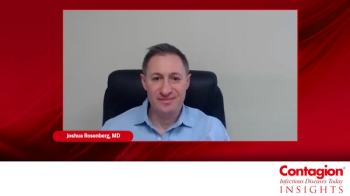
Local Transmission of the Zika Virus: Precautions & Guidelines from the CDC
Stephen Redd, MD (RADM, USPHS), Director of the Office of Public Health Preparedness and Response at the Centers for Disease Control and Prevention (CDC) explains the precautions that are already underway to protect the American public from the transference of the Zika virus.
Stephen Redd, MD (RADM, USPHS), Director of the Office of Public Health Preparedness and Response (OPHPR) at the Centers for Disease Control and Prevention (CDC) explains the precautions that are already underway to protect the American public from the transference of the Zika virus from individuals in the United States who are already infected and the guidelines that are being put into place in preparation of an outbreak.
Interview Transcript (slightly modified for readability):
"The way local
There are a couple of ways that that could be prevented.
- In general, conditions in the United States are such that the chance of a person being bitten by one of those mosquitoes is in many parts of the world or parts of the world where there is wide-spread transmission. Generally, we live in places that are air-conditioned, we have screens, we don’t generally live in houses that don’t have screens and we don’t live where mosquitoes are [going] in and out of our houses. The Aedes aegypti mosquito in the United States in principally and outside-biting mosquito. In countries that have wide-spread transmission, because of the housing, they generally bite indoors and outdoors. Air-conditioning and screens are really important. We have air-conditioning in our cars. There’s actually not that much time where we are outside, on a population level.
- The proportion of people who are outside all day long is much smaller in the United States than it is in countries who have wide-spread transmission.
- In places that have the vector in abundance, there are local measures that can be undertaken to prevent an introduced case from becoming spread into the population. That’s where a travel-associated case is identified and local vector-control measures can reduce the chances that that person would be bitten by a mosquito, and through the vector-control methods, that mosquito from biting another person.
We are working very closely with the states that are at highest risk for local transmission: Florida, Texas, Louisiana, Arizona, Hawaii, California (Los Angeles). There is intense planning with those locations on responding to the first case of local transmission. The first issue is detecting that case. Because not all infections cause symptoms, [utilizing] laboratory testing and quickly identifying cases [is very important]. We might not identify that first case because the first case could be asymptomatic.
There is going to be the need for additional laboratory testing that will be appropriately requested to understand how widespread that transmission is. We don’t think it will be widespread, but we will need to be able to confirm that.
[There will be a need for] local vector-control measures to make sure that the virus doesn’t spread any further than the likely small number of cases. We’ve been thinking, because of what’s been seen in areas where Zika is being transmitted, and Dengue and Chikungunya are also transmitted, that we are likely to see a similar pattern in the United States. That’s the basis for the most likely case and also for the measures to control the spread.
There’s a lot of thinking about what that guidance needs to be. One thing that we are working on is those general principles that need to be followed that are going to be different in every instance. There will be little variations that may have big influence on what the exact recommendations are for a particular area.
One example of a challenge is for that first case: It’s not likely that that person will only be in one single location, so knowing exactly where that mosquito bit that person is going to be hard. If there are more cases, it will be easier to localize exactly what that Zika transmission zone is. The exact circumstances are going to affect what the local set of recommendations are.”
Newsletter
Stay ahead of emerging infectious disease threats with expert insights and breaking research. Subscribe now to get updates delivered straight to your inbox.






























































































































































































































































































































